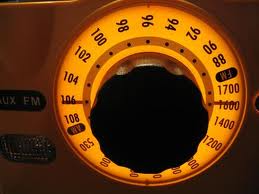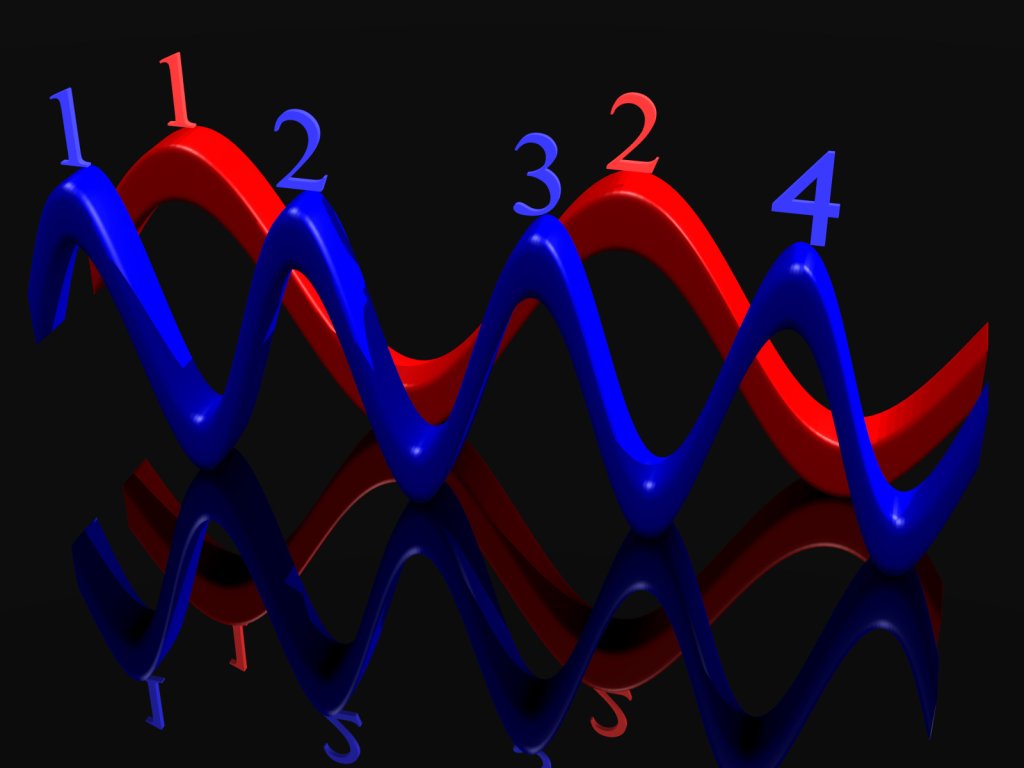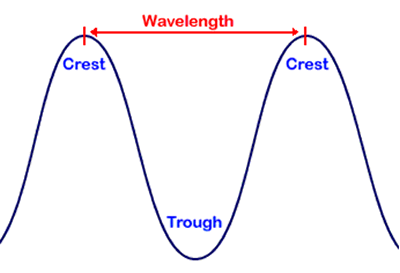HOME INTRODUCTION
MUSIC
VOLUME
FREQUENCY
BIBLIOGRAPHY
 FREQUENCY:
FREQUENCY:

http://www.universal-radio.com/catalog/spcialty/0579.html http://www.davidjarvis.ca/dave/gallery/
Different speeds, different sounds
Frequency is defined as the number of cycles or completed alternations per unit time of a wave or oscillation.
...meaning?
 In order to understand this
definition in terms of sound waves, we must first define some other
terms to describe sound waves.
In order to understand this
definition in terms of sound waves, we must first define some other
terms to describe sound waves.
The wavelength of a sound wave is the distance over which the wave starts at a point on one curve, goes through an entire cycle, and returns to that point on the next curve. The diagram to the left offers a visual definition of wavelength. The space between those two points are considered one cycle of the wave.
The period of the wave is how long it takes for the wave to travel through a cycle. This is typically expressed in seconds.
The frequency of the wave is a combination of these two ideas: it is how many cycles (with distance of the wavelength) the sound http://www.bom.gov.au/weather/radar/about/phase_changes.shtml wave goes through in one second. The unit for frequencies are cycles per second, or Hertz (Hz). This is named for German physicist Heinrich Rudolf Hertz, who discovered that energy is transmitted through a vacuum by electromagnetic waves.
Important note: For waves in general, higher frequency does not necessarily imply that points on a wave are moving faster than points on another. Frequencies are in terms of cycles, not wavelengths, so it is important to understand that only two waves with the SAME wavelength can be compared in such a way. If the wavelengths are significantly different, a point on a wave may be moving faster than another, even if its frequency is lower. This is an important note because the most common use of wave frequencies is radio waves, which have frequencies that allow us to do things like tune our car radios to listen to music.
However, since sound waves all move at approximately the same speed (the speed of sound), it is generally acceptable to use this comparison. A higher frequency means that the points on the wave go through more cycles in one second, which means the cycle is short. This implies a small wavelength, as depicted in the diagram below.
Frequency and Music
 FREQUENCY:
FREQUENCY:

http://www.universal-radio.com/catalog/spcialty/0579.html http://www.davidjarvis.ca/dave/gallery/
Different speeds, different sounds
Frequency is defined as the number of cycles or completed alternations per unit time of a wave or oscillation.
...meaning?
 In order to understand this
definition in terms of sound waves, we must first define some other
terms to describe sound waves.
In order to understand this
definition in terms of sound waves, we must first define some other
terms to describe sound waves.The wavelength of a sound wave is the distance over which the wave starts at a point on one curve, goes through an entire cycle, and returns to that point on the next curve. The diagram to the left offers a visual definition of wavelength. The space between those two points are considered one cycle of the wave.
The period of the wave is how long it takes for the wave to travel through a cycle. This is typically expressed in seconds.
The frequency of the wave is a combination of these two ideas: it is how many cycles (with distance of the wavelength) the sound http://www.bom.gov.au/weather/radar/about/phase_changes.shtml wave goes through in one second. The unit for frequencies are cycles per second, or Hertz (Hz). This is named for German physicist Heinrich Rudolf Hertz, who discovered that energy is transmitted through a vacuum by electromagnetic waves.
Important note: For waves in general, higher frequency does not necessarily imply that points on a wave are moving faster than points on another. Frequencies are in terms of cycles, not wavelengths, so it is important to understand that only two waves with the SAME wavelength can be compared in such a way. If the wavelengths are significantly different, a point on a wave may be moving faster than another, even if its frequency is lower. This is an important note because the most common use of wave frequencies is radio waves, which have frequencies that allow us to do things like tune our car radios to listen to music.
However, since sound waves all move at approximately the same speed (the speed of sound), it is generally acceptable to use this comparison. A higher frequency means that the points on the wave go through more cycles in one second, which means the cycle is short. This implies a small wavelength, as depicted in the diagram below.
 |
| Courtesy of
http://cnx.org/content/m11060/latest/ |
Frequency and Music
Frequency plays a key role
when talking about music from a physics perspective. Musical notes are
actually predetermined by waves moving at specific frequencies. The
frequencies that correspond to musical tones have changed throughout
history, but the current tonal scale is based on Johann Sebastian
Bach's work Das Wohltemperierte
Klavier, written in 1722.
Let's examine the musical scale more specifically:
This table has notes in the key of C and starts with
the first A being just below "middle C."
Notice that the frequency of the second A is twice that of the first A. This is how music is transferred from one octave to the next: by doubling or halving the frequency of the sounds' waves.
However, when moving between different keys of instruments, it is important to transpose the notes into the key of C before analyzing the frequency of the notes. For example, a C played by a flute is different from a C played by french horn. A C played by a flute actually has the same frequency as an F played by a french horn.
Let's examine the musical scale more specifically:
| MUSICAL TONE |
FREQUENCY
(Hz) |
| A |
220.00 |
| B |
246.94 |
| C |
261.63 |
| D |
293.66 |
| E |
329.63 |
| F |
349.23 |
| G |
392.00 |
| A |
440.00 |
| B |
493.88 |
| C |
523.25 |
the first A being just below "middle C."
Notice that the frequency of the second A is twice that of the first A. This is how music is transferred from one octave to the next: by doubling or halving the frequency of the sounds' waves.
However, when moving between different keys of instruments, it is important to transpose the notes into the key of C before analyzing the frequency of the notes. For example, a C played by a flute is different from a C played by french horn. A C played by a flute actually has the same frequency as an F played by a french horn.